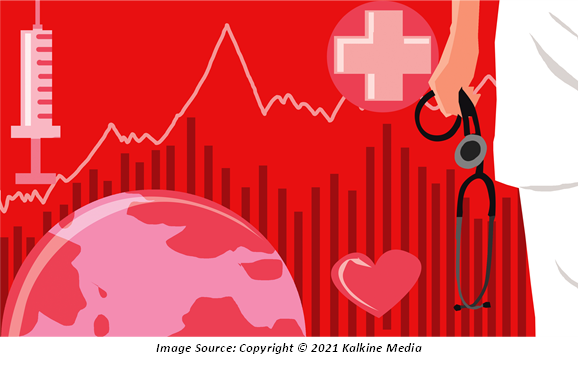What is health insurance?
Health insurance is a coverage agreement between a buyer and an insurer. The insured or the policyholder pays a premium to the insurer and in exchange, the insurance company pays medical expenses as and when the need arises. The medical expenses include day care, hospitalization, and other expenses.
The insured might be required to make payment during the treatment and the company will reimburse the same at a later stage. In case the insured has opted for the cash less insurance service, then the insured do not require to make the payment and the insurance company will settle all the bills by establishing contact with the hospital.
Summary
- Health insurance is a coverage agreement between two parties: the policyholder and the insurer.
- The policy is bought by paying a premium to the insurer, who must pay for certain medical expenses as mentioned in the agreement.
- Expenses covered under a health insurance include day care, hospitalisation, etc. and can vary depending on the insurer’s terms.
What are the most common health insurances?
- Individual health plan – The benefits of this health insurance can only be enjoyed by an individual. The individual policy can be purchased for self or anyone family member. The premium on the policy is dependent upon the age of the people and the sum insured. It is suitable for the individuals who are in an early career as the premium amount is low as the chances of health issues are low.
- Family floater policy – The policy is suitable when the aim is to secure the whole family from the health - related risks. All age groups are covered in this policy such as kids, older and adults. The biggest advantage of this policy is that all family members are brought under the umbrella cover and a single premium payment must be made rather than multiple individual premium payments.
- Top up plan – This health insurance plan is like the individual health policy. The major difference is that reimbursement is only done when the threshold limit is reached. A deductible is a term used for the threshold limit; it is the amount policyholder has to spend on the medical expenses. When the medical expenses are reached, then the policy is activated. These plans have a lower premium amount in comparison to the other regular plans. The top up plan can be combined with the regular insurance policy.
- Insurance for senior citizens – This insurance plan can only be adopted by the age group of 60 to 75 years. These plans are seen as better than other policies as it includes cashless hospitalisation. Pre-existing diseases cover, and day care expenses.

What factors to assess before purchasing health insurance?
Health insurance should be purchased based on personal requirements. Over time, with increasing competition, a range of health insurances have been introduced in the market and every insurance has different features. Health insurances have been created which might be suitable only for students, employees, senior citizens or specific diseases like diabetes, heart diseases and cancer to name a few. Since numerous products are available in the market, the consumer might get confused. Therefore, before assessing different policies, an individual should determine their personal needs or the objective to buy a health insurance policy. Once clarity is achieved, then the coverages can be decided. Moreover, the salary aspect should be given significant consideration. It is generally suggested that the coverage amount should be 6 times the buyer’s salary.
After completing the previous step, the cashless hospitalisation network should be identified. Moreover, it should be ensured that the network covers the major hospitals in the city or the area. Cashless hospitalisation stands for receiving medical treatment without making any payment during the treatment process.
The insurance company will contact the hospitals and medical bills are settled by the company. The majority of the insurance companies extend this facility, however, before making a purchase decision, the buyer should look into this aspect. Moreover, it should be ensured that the insurance company covers the majority of the top hospitals in the area or the city. The covered hospitals should also extend the facility of cashless hospitalisation. The combination of two should be double checked.

It is important to acknowledge the exact coverage offered in the insurance. The details about the coverage are provided in the policy documents in details. The coverage generally has five components.
- Hospitalisation coverage – It stands for the coverage when the insured is hospitalised to receive the treatment. The hospitalisation coverage is generally 100% but it is suggested to determine the same before making a purchase decision.
- Day – care treatment coverage – The coverage for the treatments which are generally completed in less than 24 hours within the hospital such as tonsils, cataract, chemotherapy and so on. Those policies should be taken up which covers the largest number of day care treatments.
- Rent allowances – The allowances include the rent for hospital rooms. Few plans might not cover any room rent allowance, whereas some might cover a specific per cent of the room rent. Ascertaining rent allowances allows the insured to plan their personal needs efficiently.
- Post and prehospitalisation coverage – Post-discharge expenses or expenses before hospitalisation which are directly related to the treatment are eligible for coverage. Policies specify the days for which this coverage can be enjoyed by the insured.
- Sub limit – There is sub limit coverage for few diseases such as maternity, cataract to name a few.
The plan’s waiting period, exclusions and co-payment should be examined prior to making a buying decision. The waiting period stands for the time period in which no claim will be allowed. The co-payment clause stands for the share of payment that has to be made by the policyholder during the treatment. Exclusions stand for those diseases that might not be covered by the insurance policies. However, in few insurance policies, the policyholder cannot ask for a claim of specific diseases but after completion of a specific period, those diseases will be covered.
Benefits that can enhance the total sum insured should be identified. The total sum insured can be increased only in two ways, that is, no claim bonus and restoration related benefits. No claim bonus means that if the policyholder does not ask for any claim and renew their policy, then the insured amount increases by a specific percentage (generally 50%). On other hand, restoration benefits mean that if the policyholder claims the entire insured sum during their treatment then the insurance company will increase the sum insured without asking for an additional premium. This clause is mentioned in the policy documents only.
 Please wait processing your request...
Please wait processing your request...